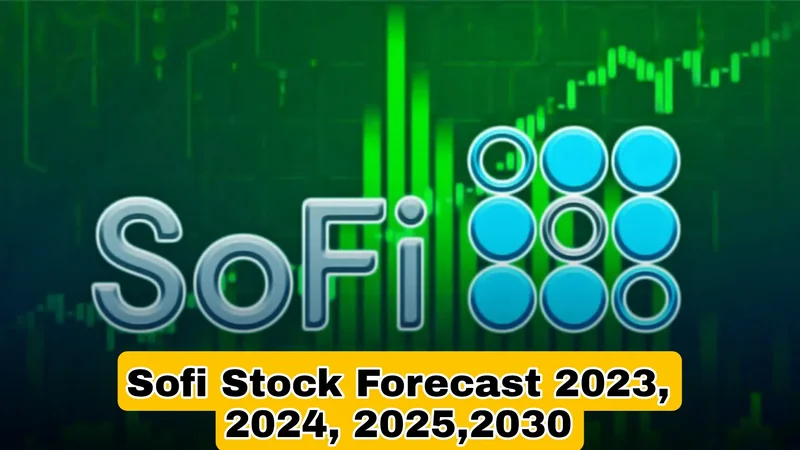So, you want to understand what’s happening with SoFi? Good luck. You’d have an easier time trying to nail Jell-O to a tree. The stock’s down over 8% in a week, which on its own is just another Tuesday in this clown-show market. But the real story, the part that should make you want to throw your laptop out a window, is the "expert analysis" bubbling up from the sewers of Wall Street.
It’s a masterclass in saying absolutely nothing while pretending to say everything.
You’ve got analysts tripping over themselves to issue guidance that is so profoundly, beautifully contradictory it almost feels like performance art. It's a division captured perfectly by headlines like SoFi Stock Slumps: Analysts Divided on Future. It's like watching a weatherman predict a sunny day while standing in a hurricane, telling you to wear sunscreen but also build an ark. And we're all just supposed to nod along and pretend this is normal.
The Two-Faced Prophets of Wall Street
Let’s start with the crown jewel of this mess, courtesy of Morgan Stanley’s Jeffrey Adelson. The firm slapped a "Sell" recommendation on SoFi. Clear enough, right? Sell means sell. Get out. Run for the hills. It’s the big red button you’re not supposed to touch.
But wait. In the exact same breath, they raised their price target on the stock.
Read that again. "We think you should sell this, but we also think it’s going to be worth more than we previously thought." What in the hell am I supposed to do with that? This is the financial equivalent of a food critic writing, "This restaurant is a culinary disaster serving lukewarm garbage, and I’m raising my estimate for their tasting menu from $150 to $175." It’s incoherent. It’s an insult to the very concept of advice.
Their justification? "Improved credit performance." That’s the magic phrase they’re hiding behind. It’s corporate-speak for, "Things look a little less terrible than they did yesterday, but we’re still too scared to actually put our necks on the line." It’s a hedge. A pathetic, transparent attempt to be right no matter what happens. If the stock tanks, they can point to their "Sell" rating and say, "We told you so!" If it rallies, they’ll point to the raised price target and claim they saw the "underlying strength" all along. This isn't analysis; it's professional cowardice.
So, I have to ask: Who is this guidance for? It certainly ain't for the average person trying to figure out where to park their money. Is it just for their internal metrics, a way to game their own performance reports?

Drowning in the Contradiction
To make things even muddier, you have Giuliano Bologna over at Compass Point, who just stuck with his own "Sell" rating. No fancy footwork, no doublespeak. Just a simple, straightforward "Get out." At least I can understand that. It might be wrong, it might be right, but it’s a clear opinion.
Morgan Stanley’s call, on the other hand, is a Rorschach test. A bull will see the raised target and feel validated. A bear will see the "Sell" rating and do the same. It’s a signal designed to be noise. It’s like a traffic light flashing red, green, and yellow all at once while blaring polka music. You’re not informed; you’re just paralyzed by the sheer stupidity of the display.
And how does the market react? It looks like it’s just listening to the simple part. The stock is down. People heard "Sell" and they hit the button. They ignored the footnote, the asterisk, the fine print where the analyst tried to have it both ways. So you have one guy yelling 'get out!' and another whispering 'get out... but maybe the house is a little nicer than we thought?' and the market just hears... the yelling.
This whole song and dance reminds me of trying to get a straight answer from my cable company. I call them up, sit on hold for 20 minutes listening to a tinny version of a song I hate, and finally get a human who tells me my bill is going up because of "network enhancements," but my internet still buffers every time a cloud passes overhead. It’s the same infuriating logic. You’re paying more for something they’re simultaneously telling you isn’t good. It’s a bad deal. No, 'bad' doesn't cover it—this is a five-alarm dumpster fire of financial advice.
So, Who Are You Supposed to Believe?
This is the part where I’m supposed to offer some grand, unifying theory. But I can’t. Because the core of the problem is that the people who are paid to know things are either clueless or they’re deliberately confusing everyone. It's a classic case of analysts trying to have their cake and eat it too, and offcourse, the retail investor is the one left with the crumbs.
You’re left staring at your screen, watching the red numbers pile up, with two "experts" giving you two flavors of bad news. One is a shot of whiskey, straight and harsh. The other is a bizarre cocktail of poison mixed with a sugar packet. Which one do you drink?
Then again, maybe I'm the crazy one here. Maybe there’s some 4D chess move in raising a price target while telling people to sell that my simple, non-Wall Street brain just can’t process. Maybe it’s a secret code for institutional clients that I’m not privy to. But I doubt it. Occam’s razor usually applies: the simplest explanation is that they have no earthly idea what’s going to happen next, and this is how they cover their asses.
What is the actual point of a stock analyst if their recommendation is functionally useless? Are they here to provide clarity or to create just enough fog so they can’t be blamed when their predictions inevitably blow up?
Just Pick a Lane, Guys
Let's be real. This isn't financial analysis. It's a circus act. When an "expert" issues a "sell this, but it's worth more" rating, they aren't offering insight. They are abdicating responsibility. They're planting a flag on both sides of the battlefield and waiting to see who wins so they can claim they were there all along. The real signal here isn't about SoFi's credit performance or market position; it's about the deep, systemic rot in a financial analysis industry that values ass-covering over clarity. The confusion is the message.
